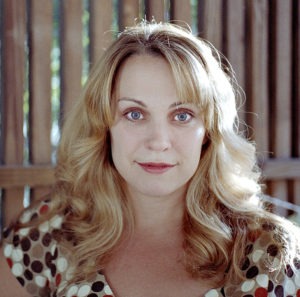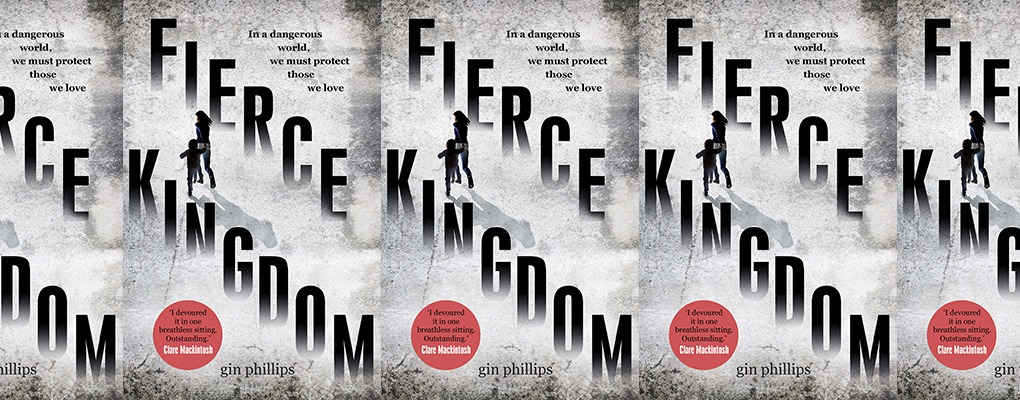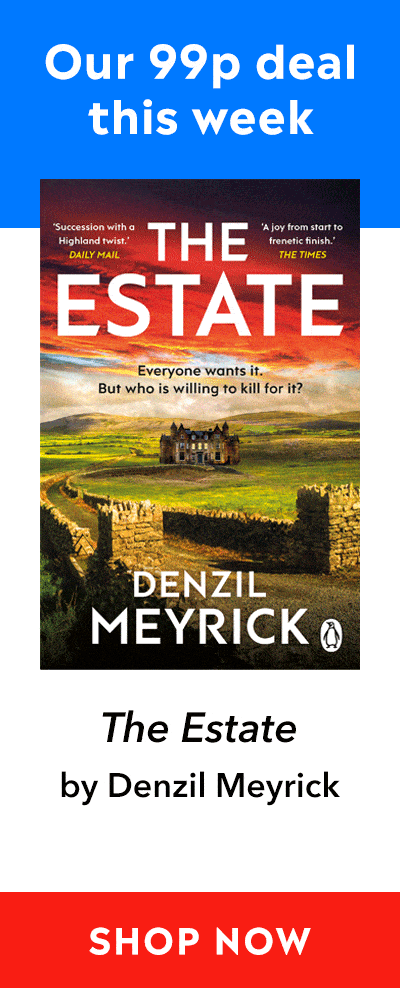Books
An interview with Gin Phillips
We’re delighted to be kicking off the Fierce blog tour!
Fierce, the race-against-time thriller by Gin Phillips, has got everyone talking. Perfect for fans of Room and We Need To Talk About Kevin, this book takes us to the heart of one mother’s plight and makes it universal.
When an ordinary day at the zoo turns into a nightmare, Joan must summon all her strength to protect her son at all costs – even if it means crossing the line between right and wrong, between humanity and animal instinct. We wanted to find out more about the book from the author herself.
 Where did the idea for Fierce come from?
Where did the idea for Fierce come from?
As the mother of a five-year-old, I’ve spent plenty of time in our local zoo. All that wandering from merry-go-round to petting zoo to reptile house gives you plenty of time to daydream about potential novel ideas. At some stage it struck me that all my recent ideas had one thing in common: motherhood.
So I thought, well, what if motherhood is the story? What if I create a scenario with the main purpose of turning the idea of motherhood round and round and taking a long look at it? Maybe a dark daydream of a life-or-death situation could be the centre of a novel about motherhood. Maybe all the intricacies of motherhood – the love and joy and sacrifice and animal pull of it – might be brought out most intensely in the most intense situation.
There’s an interesting dynamic between man and animal at play throughout the story. The setting is an environment where humans are viewing animals in captivity, then the humans find themselves captive in the zoo as well. How much did the zoo setting influence the plot of Fierce?
For me, the zoo is a place where I have a very geographic sense of the different phases of my son… and of how those phases have flared so brightly and then evaporated. Once upon a time, when he was two, he liked to climb a stone turtle, but he had forgotten the turtle entirely by the time he was three. He used to love the merry-go-round, but then a guy with a weird voice spoke to him while he was riding, and that was it for the merry-go-round. In the zoo, I’m focused on my son’s present moment – his odd obsessions and hilarious quirks and stubborn habits – while also being constantly reminded of all the other versions of him that had disappeared.
The truth is that as your child grows up, you lose him over and over again. You get a new child in return, but that old version is lost.
So there’s that personal connection for me, but, yes, the zoo also works on a broader level. I liked the idea of setting a story in a very domestic, suburban kind of setting – somewhere recognizable to every parent. The zoo fits that label: safe and familiar and unthreatening. And that’s how we think of mothers sometimes, isn’t it?
But the zoo also has a darker current. Alongside prams and candy floss, there are sharp teeth and claws and the promise of everything that is undomesticated. There are wild things in boxes. There is power.
I think that sense of complexity works well for what plays out in the story. Joan and Lincoln wind up feeling trapped, so there is that echo of the caged animals, but Joan is also smart and strong and sure. She has power.
Motherhood is associated with animalistic maternal instincts. Joan is portrayed as a fierce and powerful mother who will do anything to protect her son. How do her actions play up those instincts?
I knew from the beginning that I wanted one of Joan’s most distinctive traits to be that she takes action. There is nothing passive about her. She does not spend any time whining or dithering. She doesn’t have the luxury for that kind of wasted time and energy, but it’s also just not who she is. In each moment, she looks at the threat and at what action is most likely to keep her son safe, and that’s the choice she makes. For most of the book, she keeps that focus without wavering.
And, of course, one of her greatest assets is her knowledge of her son. Knowing the ebb and flow of his moods, knowing what will distract him or comfort him or frighten him – those details become survival tools.
The entire plot takes place over the span of three hours. What were some of the challenges of such an intense time frame?
I actually loved working within the frame of the real-time pacing. In some ways, it made the writing simpler because there was so little space for backstory. Every bit of the story takes place within the zoo walls, and there’s room only for the smallest fragments of life before the zoo. Otherwise, you wreck the pacing and lose the intensity. That made picking and choosing those fragments a really compelling challenge – fun, actually.
Those limits kept me focused, and that helped me to be ruthless with cutting anything not essential.
The story is told from the point of view from multiple characters, including one of the perpetrators. What was it like trying to get into his head?
There are half a dozen people or so from my past who I cobbled together for Robbie. I thought it was crucial that he have some qualities that all of us could recognize – a tendency to blame others and an unwillingness to take responsibility himself. Lack of direction, laziness, self-hatred… They’re not such uncommon traits.
I see Robbie as someone who could have ended up in a different place. He could have made different choices. I think that sense of ‘what-if’ makes his character more haunting.
We all know someone in our past who could have ended up like Robbie if they had gone down a certain path. How important was it to you to tell his side of the story?
Ultimately, this is a book about connection, most obviously between mother and son, but also much more broadly. I want readers to recognize something in Robbie – to have a flash of someone they went to school with or someone their kid used to hang out with. To have the perpetrators as completely faceless and unknowable diminishes the evil; I think there’s something scarier about seeing something human in Robbie and realizing he’s capable of this horror anyway.
What is the role of stories in the book?
Most of the major characters have stories that resonate with them and – to different extents – form them. Lincoln has his superheroes and villains. Joan has her 1980s spy show. Robbie and Mark have their alien war movie. Joan keeps crafting a narrative of Lincoln’s life, moment by moment. Even Kailynn has her father’s stories, which spark her own reaction to a life-or-death situation.
In all their forms, the stories connect the characters to their pasts and to their hopes. I think it works that way in real life – we watch or read or listen to stories, and they show us what the world is. They help us imagine who we want to be and who we don’t want to be.
Joan’s single-minded focus on her son is at times at odds with her desire to help others in the zoo. How did you see those two competing impulses?
I don’t think you can write about motherhood without acknowledging that there is a certain selfishness in it. I would do anything for my child… but where does that leave me in terms of your child? What do I do when the greater good comes up against what works best for me and mine?
I think ultimately Joan is faced with a broader definition of mothering. How big of a role do we have in the life of someone else’s child? What do we owe to strangers? Mrs. Powell clearly had an impact on Robbie – enough so that his memories of her alter his plans. Teachers, too, fit into the idea of mothering as a wider and deeper responsibility – we shape the people around us. We owe something to each other, even if we’ve just met. Even if we’ve never met.
Don’t miss the next stop on Gin Phillips’ Fierce Kingdom blog tour!


1 Comment
Please note: Moderation is enabled and may delay your comment being posted. There is no need to resubmit your comment. By posting a comment you are agreeing to the website Terms of Use.